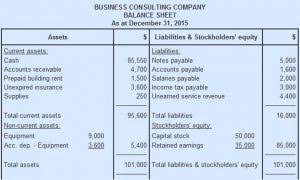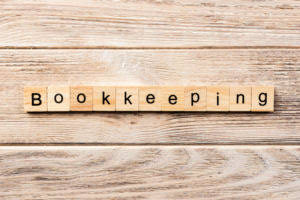
In accounting, a general ledger is used to record a company’s ongoing transactions. Within a general ledger, transactional data is organized into assets, liabilities, revenues, expenses, and owner’s equity. After each sub-ledger has been closed out, the accountant prepares the trial balance. A general ledger represents the record-keeping system for a company’s financial data, with debit and credit account records validated by a trial balance. Transaction data is segregated, by type, into accounts for assets, liabilities, owners’ equity, revenues, and expenses.
How to Construct a General Ledger for Your Small Business

Then, you summarize that information in a master notebook—the general ledger. It is used to track revenue and expenses, as well as provide the status of the company’s financial health. The general ledger is also essential to generate all of the company’s financial reports and statements, in addition to tax compliance. The GL accounts will possess what information would you need to create a new general ledger account for landscaping expenses? a list of all transactions involving that specific account. These entries will correspond with the company’s journal entries– which record all increases and decreases to accounts. Some ledger accounts are used automatically by Sage Accounting when recording transactions to ensure that items such as your tax are recorded correctly.

How to create an accounting ledger
You record the financial transactions under separate account heads in your company’s General Ledger. General Ledger is a principal book that records all the accounts of your company. Furthermore, all the accounting entries are transferred from the Journal to the Ledger. Now, each of your transactions follows a procedure before they are represented in the final books of accounts. First, the transactions are recorded in the Original Book of Entry, known as Journal. Once the Journal is complete, these transactions are then posted to individual accounts contained in General Ledger.
- To ensure its efficiency, make sure the chart of accounts is updated regularly.
- The stockholder’s equity refers to the excess of assets over liabilities of your business.
- Now, the best practice of recording a correct entry is to reverse the original entry and then record a new entry with the correct amount.
- Although there are tools that automatically categorize these transactions, it’s still important to know the basic components of general ledger accounts.
It gives you one place to view all your transactions
- Also, liabilities can be represented on the right-hand side of the balance sheet.
- Thus, it forms the basis of your financial statements and helps you in evaluating the financial affairs of your firm.
- For example, you can review your financial activity over the past year or shorten the time frame to the past 90 days.
- This may be done because of errors or in order to record internal transactions that don’t affect accounts payable, accounts receivable, or payroll.
- Equity is the difference between the value of the assets and the liabilities of the business.
- You can then investigate discrepancies and make corrections if necessary.
It contains detailed information about each transaction, including dates, amounts, and descriptions. Most importantly, from an accounting perspective, the general ledger includes debits and credits for each transaction. In this step, you need to compare the previous accounting periods closing trial balances to the opening balances of the current period ledger accounts.

General ledgers provide an overview of your business finances.
Of course, it’s still possible to do your bookkeeping with a paper ledger. But since bookkeeping by hand takes 1,000 times longer, most business owners and bookkeepers use accounting software to build their general ledgers. The general ledger details all financial transactions of all accounts so as to accurately account for and forecast the company’s financial health. It’s often necessary to move amounts or transactions from one general ledger account to another. This may be done because of errors or in order to record internal transactions that don’t affect accounts payable, accounts receivable, or payroll.
Furthermore, you identify errors or misstatements and take the requisite actions to make good the errors. Therefore, your or your accountants go through each of the accounts individually if you prepare Journal and Ledger manually. Your General Ledger records transactions under different account heads. Thus, General Ledger Reconciliation helps you to ensure accuracy of the information contained in your General Ledger Accounts. Further, the shareholder’s equity includes share capital, retained earnings, and treasury stock. Thus, the shareholder’s equity appears on the liability side of your company’s balance sheet after current and non-current liabilities.
The General Ledger’s Role in Small Business Accounting
As a busy business owner, you may not have much interest in basic accounting principles, such as maintaining a general ledger. While most accounting activities are best left to your accountant, understanding what a general ledger is and how it works can be beneficial. We have financial relationships with some companies we cover, earning commissions when readers purchase from our partners or share information about their needs. Our editorial team independently evaluates and recommends products and services based on their research and expertise. The sub-ledgers you use will depend on what type of business you run.